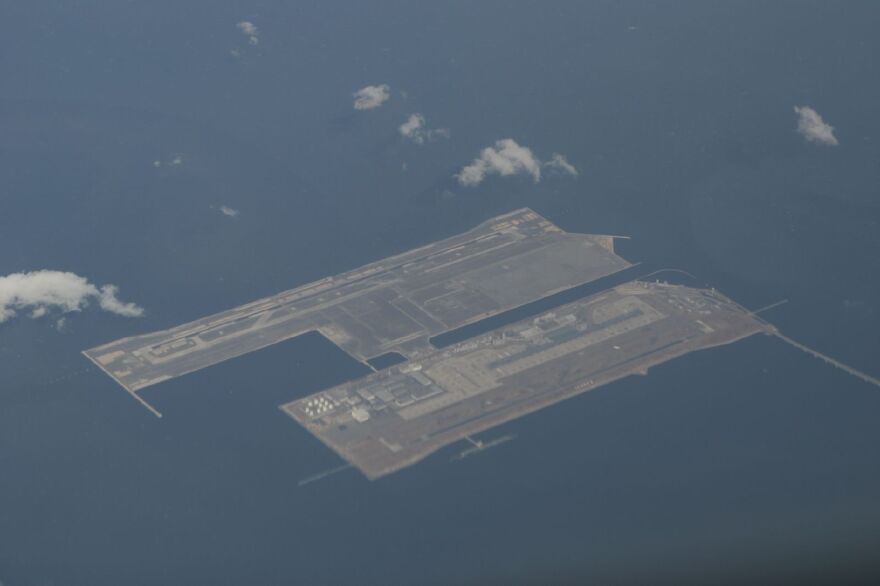Heavy rains and wind have had an impact on transportation around the islands this week. But some flights to Honolulu have been affected by another storm in the Pacific — one that hit last week.
Flights heading to Honolulu from Japan’s third-largest airport have been canceled this week. The Kansai International Airport was hit more than a week ago by Japan’s strongest typhoon in a quarter century.
Parts of the complex are still closed.
24 years ago, the airport was built on an artificial island — which has been slowly sinking into Osaka Bay ever since. It’s now 38 feet below the level when the airport opened.
That lower elevation has complicated recovery efforts.
Terminal One remains closed, and this week reporters said staff were still drying out power control panels with electric fans. Authorities hope to re-open terminal one by Friday.
The risks of low-lying airports combined with climate change are not restricted to the Kansai Airport or the Asia Pacific. Four years ago, the potential threat was mentioned in a U.S. government report called the “National Climate Assessment.” It was put together as an inter-agency project and using testimony of more than 300 scientists and other specialists.

The report found that 13 of the largest 47 airports in the United States have at least one runway at an elevation within the reach of moderate to high storm surge . . . like what happened at the Kansai Airport.
That list of 13 includes Honolulu.




